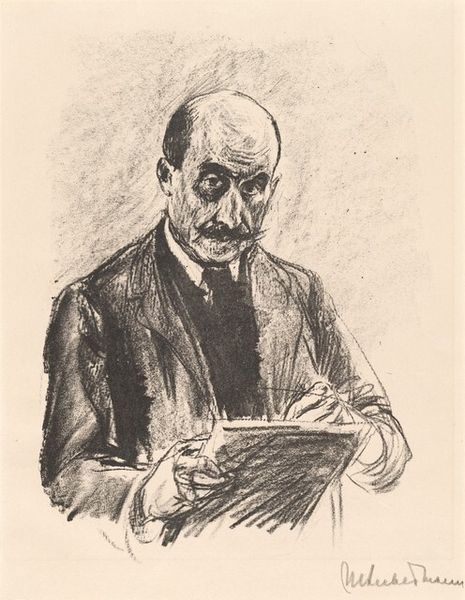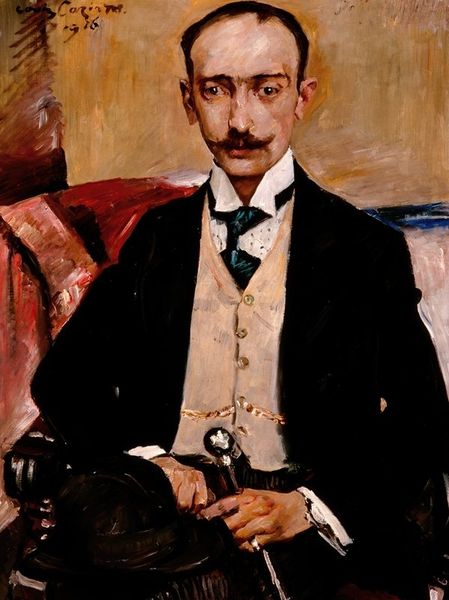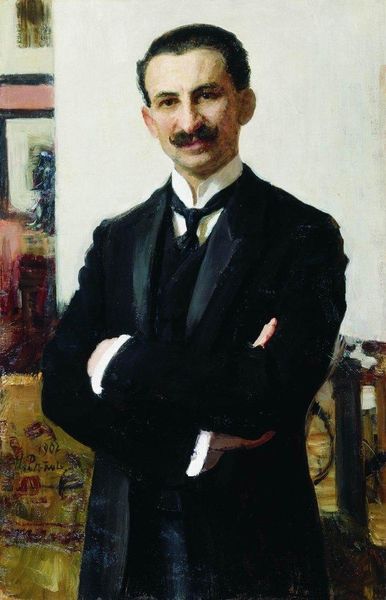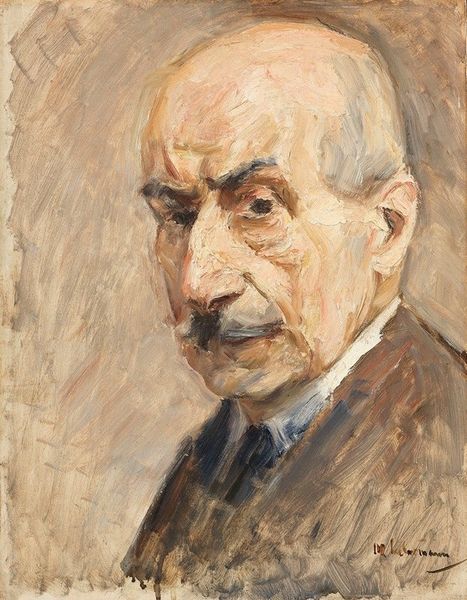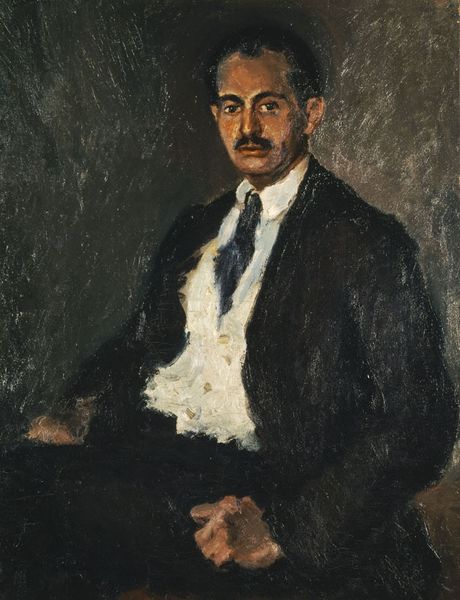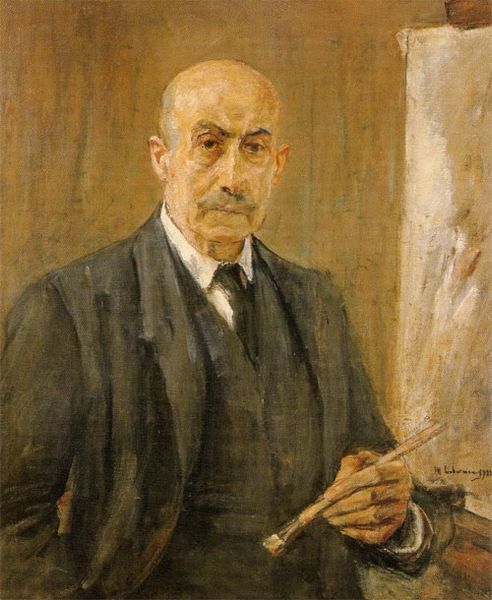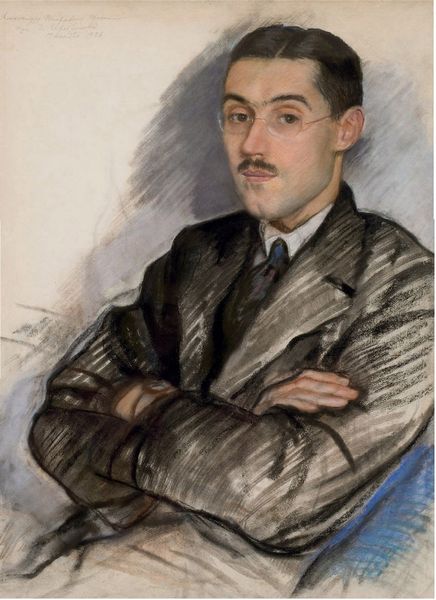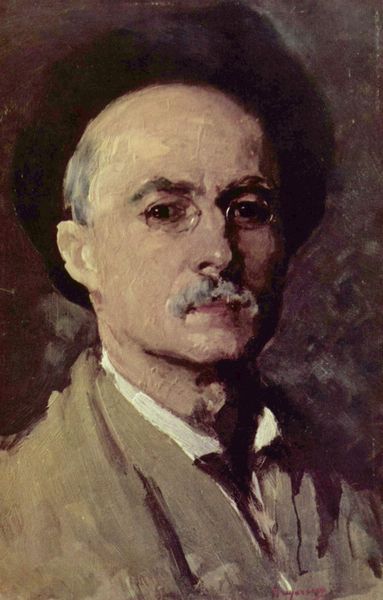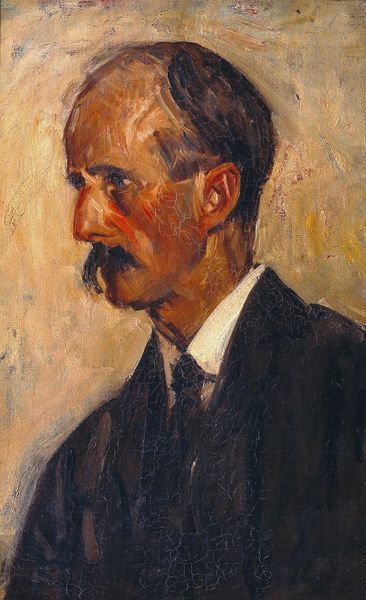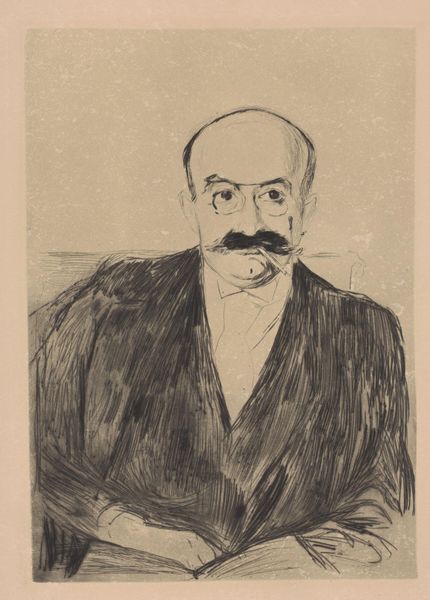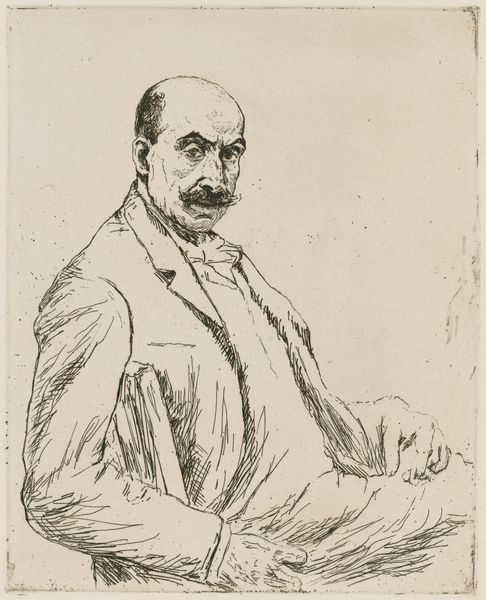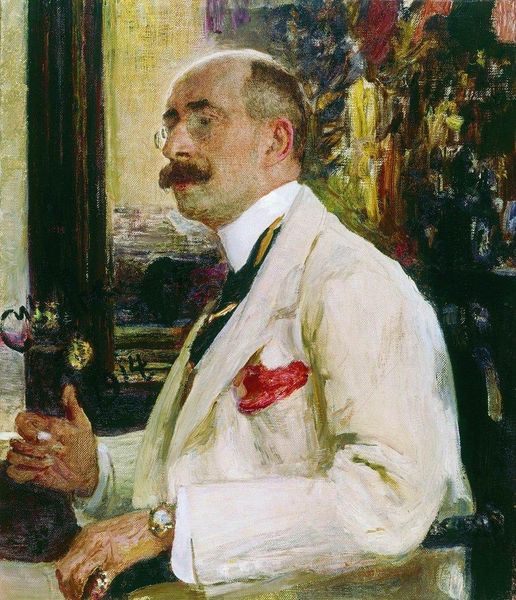
Dimensions: 72.7 x 60 cm
Copyright: Public domain
Editor: Here we have Anders Zorn's 1891 oil on canvas, "Portrait of Max Liebermann." There's a sense of quiet intensity about it, almost like Liebermann is considering something deeply. How do you interpret this work? Curator: Beyond the sitter's intensity, what I find striking is how this portrait operates within, yet subtly challenges, the social conventions of portraiture in that era. Consider Liebermann’s own position: a Jewish artist navigating German society, painting and being painted by other artists. Do you see how the seemingly straightforward portrayal actually opens up questions about belonging, representation, and even cultural power? Editor: I see what you mean. The darkness surrounding Liebermann almost seems to isolate him, even though he is clearly a man of stature. Curator: Exactly. Think about the context: 1891 was a time of rising antisemitism in Europe. The 'stache and the dark suit seem to convey status but the shadows feel indicative of that era. How might Liebermann have been seen and how does Zorn choose to depict his sitter considering such socio-political dynamics? Editor: That really changes my understanding. I was so focused on the artistic style that I overlooked the cultural implications. It’s more than just a portrait; it’s a statement. Curator: Indeed. By looking at art through this lens, we can move beyond the surface to see the complexities and social forces at play, recognizing how identity, race and societal status are embedded in the seemingly simple strokes of a painter’s brush. Editor: This makes me want to analyze every portrait I see from now on, looking beyond just the subject to understand the broader context. Curator: That's the power of art history when engaged with contemporary theory. It invites us to constantly question and re-evaluate our understanding of the world.
Comments
No comments
Be the first to comment and join the conversation on the ultimate creative platform.
